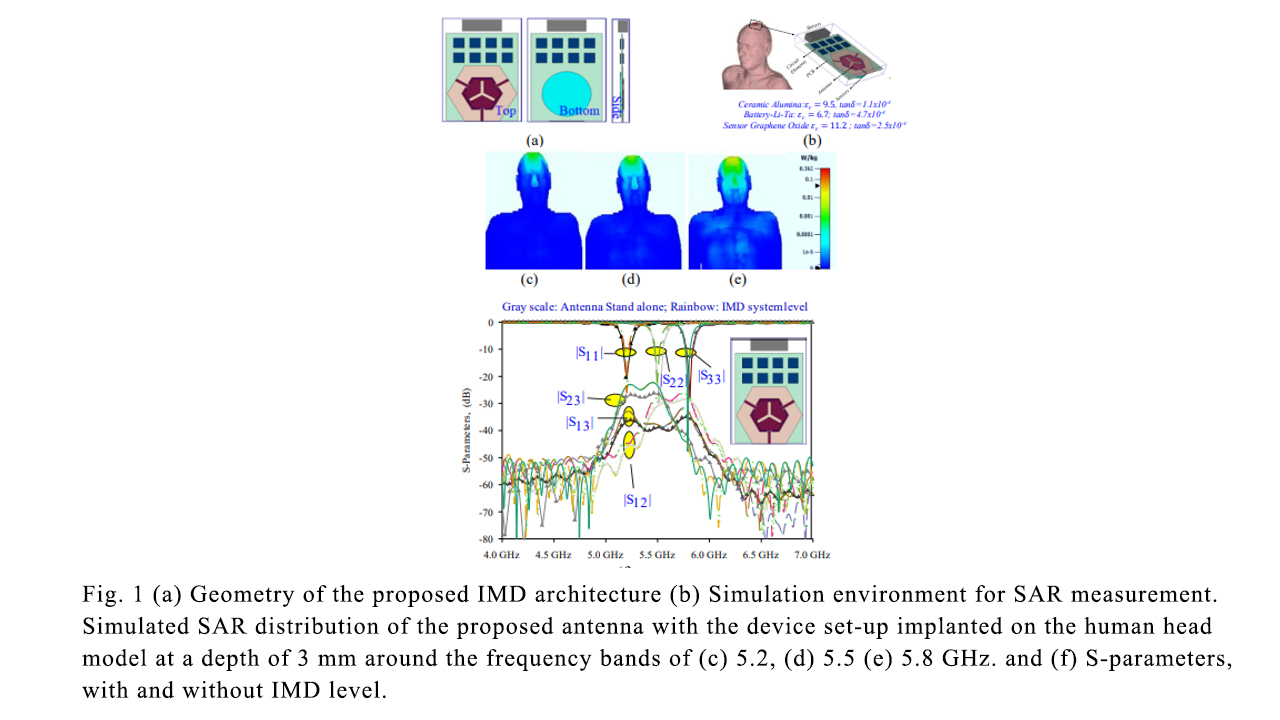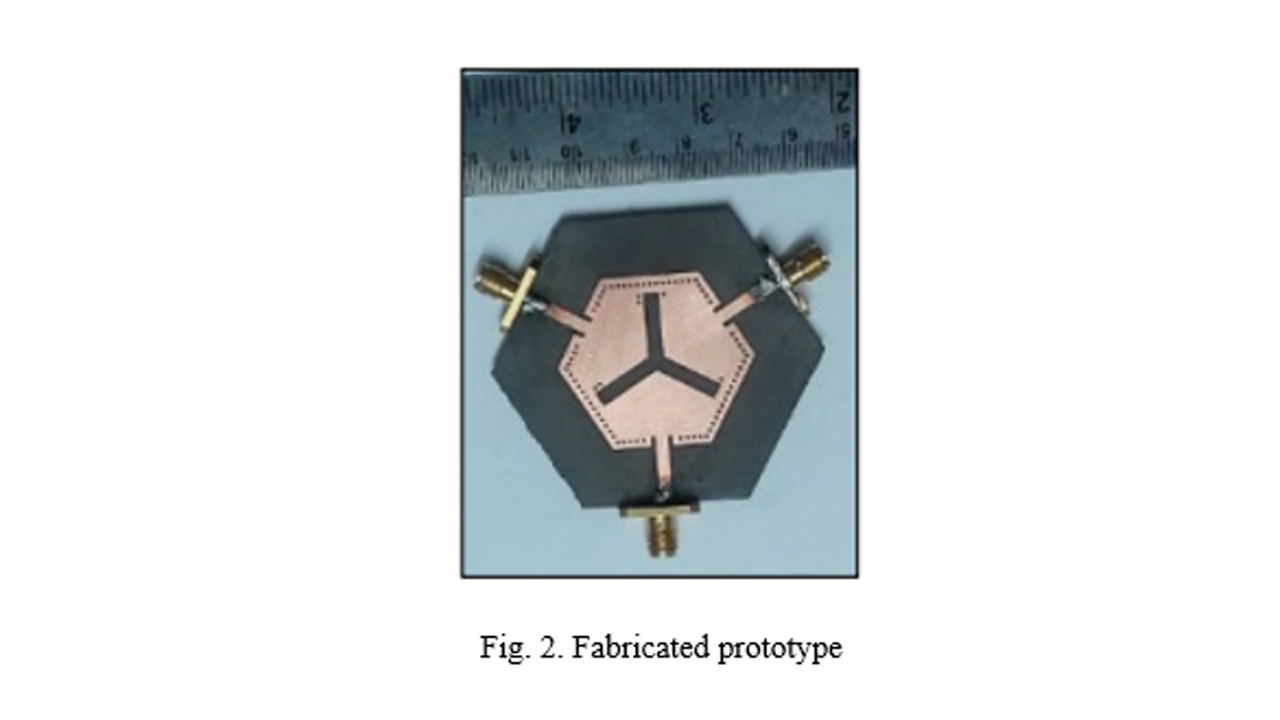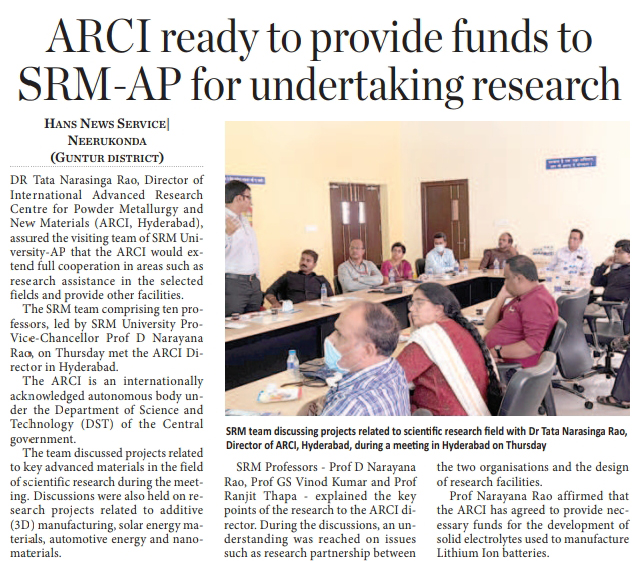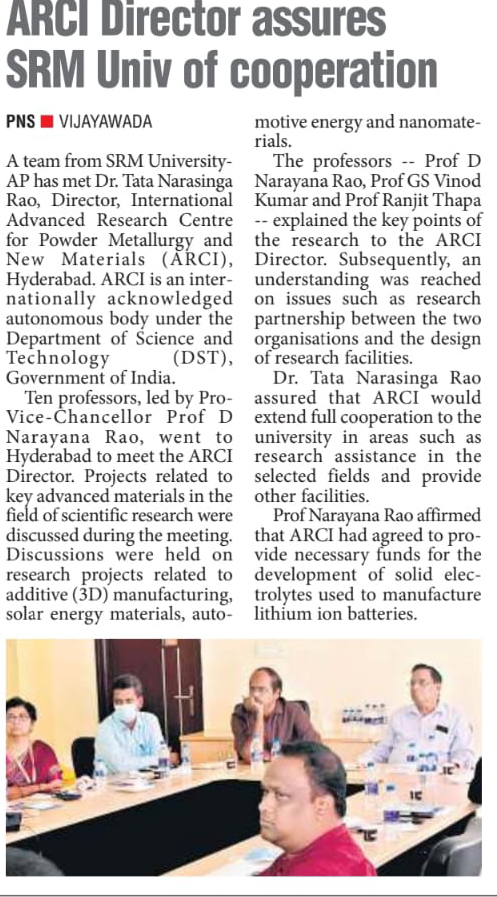- Ethnic Day celebrated at SRM-AP varsity May 5, 2022
- ARCI ready to provide funds to SRM-AP for undertaking research May 5, 2022
- SRM-AP V-C bags EduStar’s Most Impactful V-C award May 5, 2022
Telegraph – April 30
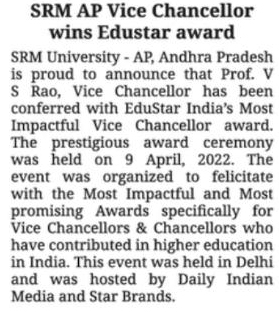
Financial Express – April 22
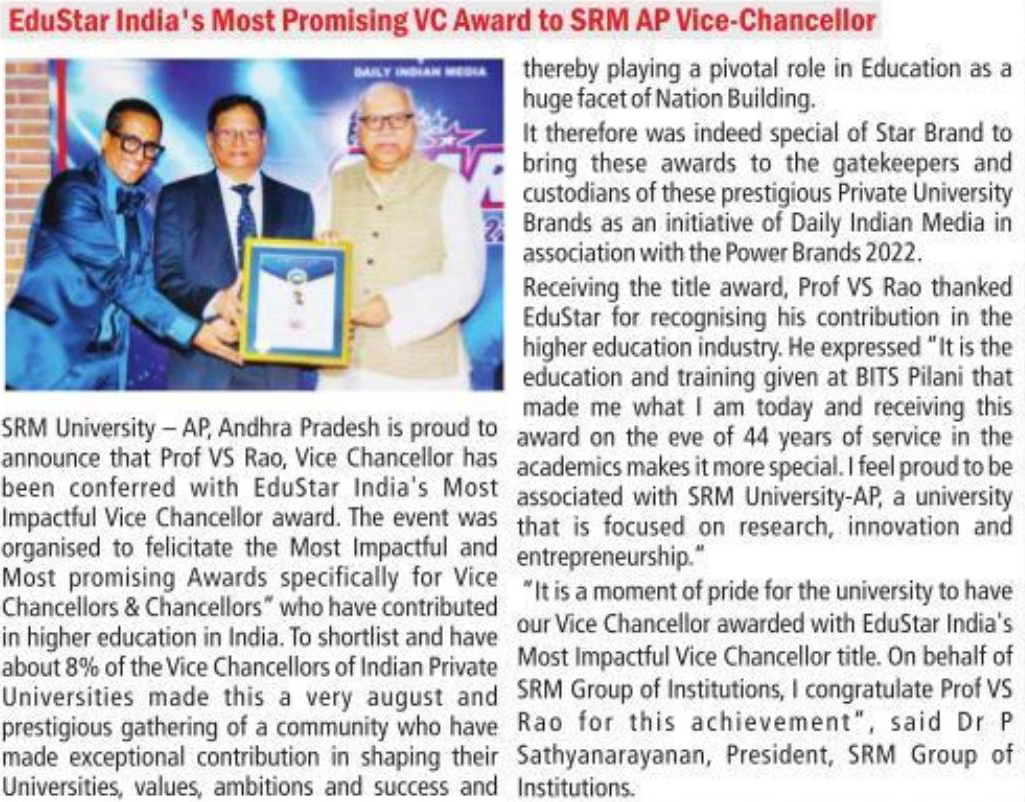
Indian Express – April 20
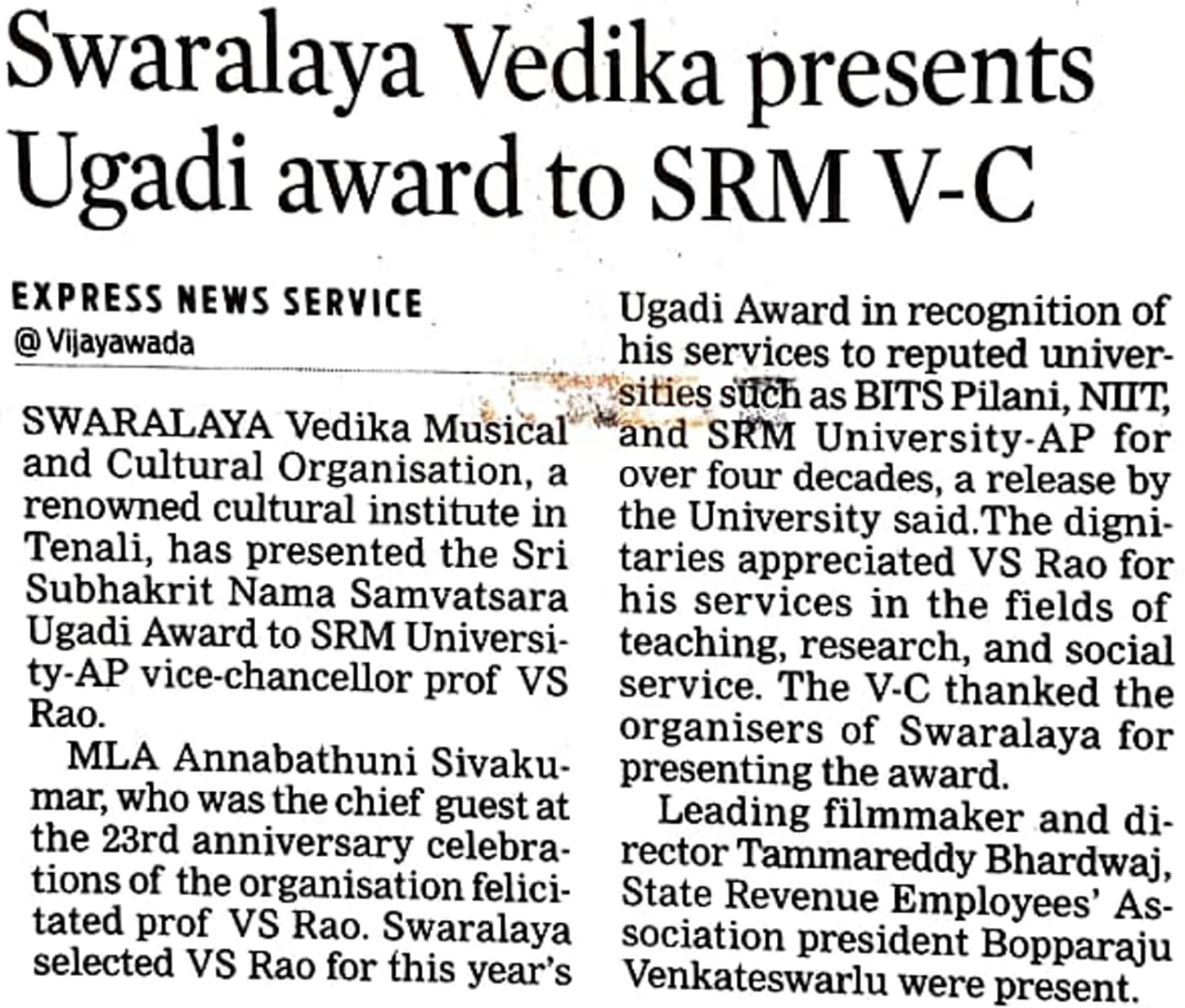
Indian Express – April 20
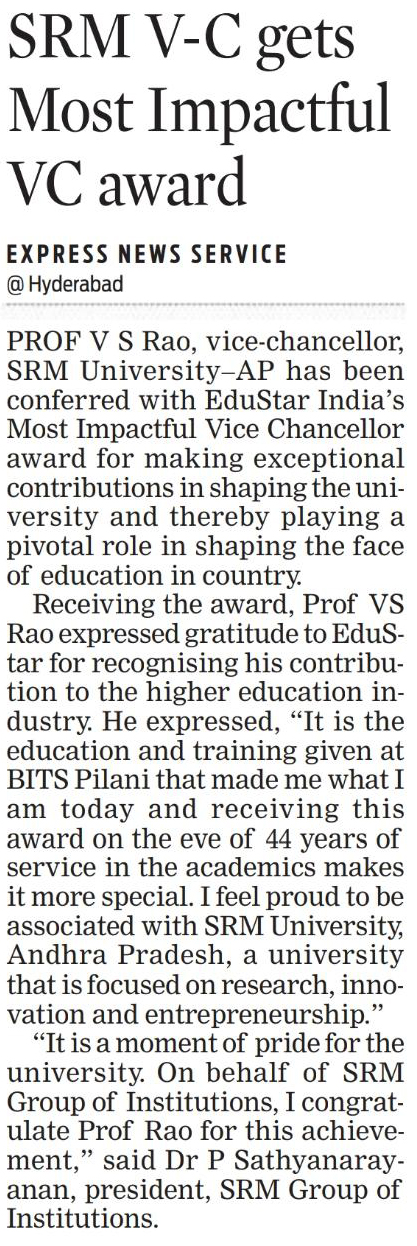
Hans India – April 10
Continue reading →
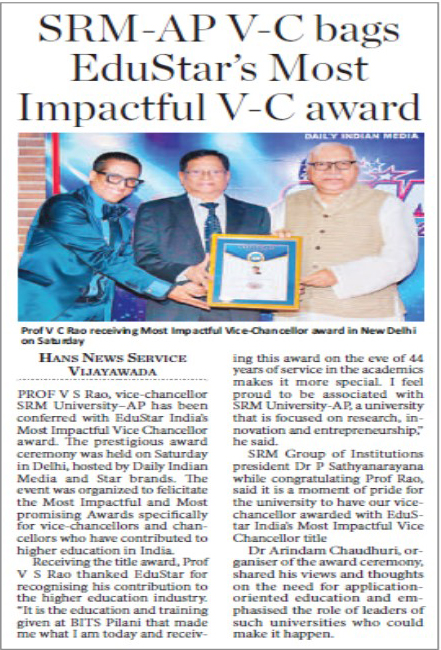
- Know your style of writing May 4, 2022
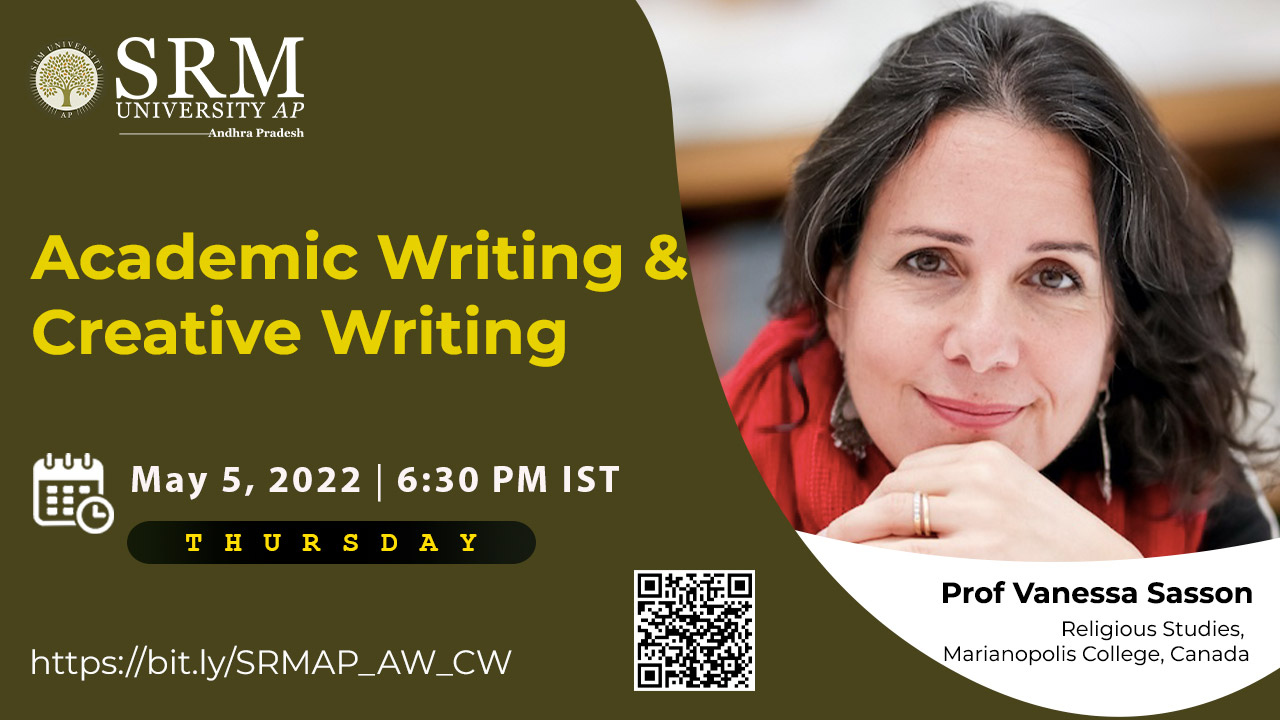
The art of writing can be branched out into different types depending upon the purpose of each piece of writing. You might have come across varied styles of writing such as creative writing, academic writing, technical writing and many more. Have you ever tried to deduce the difference between all these writing styles? Well, we offer you an informative session that will help you gather a better understanding of different styles of writing.
The Department of English has scheduled a webinar on the topic “Academic Writing & Creative Writing” under the theme “Language and Society” with Prof Vanessa Sasson as the keynote speaker.
Date: May 05, 2022
Time: 6.30 PM IST
Academic writing and creative writing seem to be pulling the act of writing and the writers in two different directions. A lot of writers, especially aspiring writers, tend to think of both genres as catering to very different audiences and fulfilling very different needs in very different contexts. Does that mean you can be only one and not the other? Do you have to choose? And how do you decide what to commit to? In this talk, Prof Vanessa Sasson will share her experience of writing in both capacities and discuss the joys and challenges of both.
About the Speaker
Vanessa R Sasson is a professor of Religious Studies in the Liberal Arts Department of Marianopolis College where she has been teaching since 1999. She is also a Research Fellow at the University of the Free State and a Research Member for CERIAS at UQAM. She has published widely as a scholar, with a number of academic books to her credit. Her most recent book was published by the University of Hawaii Press (2021) and is entitled, Jewels, Jewelry, and Other Shiny Things in the Buddhist Imaginary. Yasodhara and the Buddha (Bloomsbury, 2021) is her first novel. She is currently completing the sequel.
Join the Webinar to master the art of writing!
Continue reading → - Launching antenna-multiplexer for seamless IoMT connectivity May 2, 2022
Dr Divya Chaturvedi, Assistant Professor, Department of Electronics and Communication Engineering, has come up with an exciting proposal for enhanced connectivity and high-speed data transmission across the Internet of Medical Things (IoMT) devices. Her research paper titled “Design of Antenna-Multiplexer for Seamless On-Body Internet of Medical Things (IoMT) Connectivity” has been published in the journal ‘IEEE Transactions on Circuits and Systems II: Express Briefs’, having an impact factor of 3.71. It was published in collaboration with Dr Arvind Kumar from Vellore Institute of Technology and Dr Imaculate Rosaline from Ramaiah Institute of Technology, Bangalore.
The research looks into the design and development of a multi-band self-triplexing antenna for Medical Things (IoMT) applications. The antenna is designed to operate at 5.2, 5.5 and 5.8 GHz and self-isolation is achieved below -23.9 dB. It also offers seamless communication links to other devices operating at the same frequencies. The designed antenna is cost-effective and compact in size, that can easily fit into any implantable medical device. To avoid the harmful effect of radiation, the SAR value should be <1.6 W/kg. The SAR for this antenna is achieved at 0.362 W/kg in a very simple profile. Due to its compact size, the antenna can be easily mounted in a wireless portable device. The self- triplexing property of the device also enables full-duplex communication between different devices in a single antenna. This design suggestively simplifies the density of the RF front-end subsystem and leads to a simple and efficient communication system.
Abstract of the Research
Here, a compact design of antenna-multiplexer is engineered specifically to meet the stringent requirement imposed by intricate subsystems operating at 5.2, 5.5, and 5.8 GHz frequency bands for Internet of Medical Things (IoMT) applications. The proposed design includes a hexagonal-shaped substrate integrated waveguide (HSIW) cavity, tripole-shaped radiating slot, tuning vias, and three inset microstrip feedlines. A tripole-shaped slot is imprinted on the top of the SIW. This slot subdivides the cavity into trio-radiating segments and each segment offers a single frequency band. Further, the frequency bands are tuned at 5.2/5.5/5.8 GHz. The design maintains mutual port isolation better than 23.9 dB. Compared with the conventional tri-frequency antennas, the proposed design is highly compact and doesn’t need any additional circuitry to improve the port isolations. The measured results confirm the expected performance of the design. Furthermore, the proposed antenna is optimized within an implantable medical device (IMD) and simulated inside a realistic Human Head model at a depth of 3 mm and the Specific Absorption Rate (SAR) value is estimated. The SAR values are well below 0.362 W/Kg at the functioning bands due to the unidirectional radiation pattern from the antenna.
Her future research plan includes designing and developing a cost-effective bra-like prototype of Antenna-Array Sensors for breast cancer detection.
